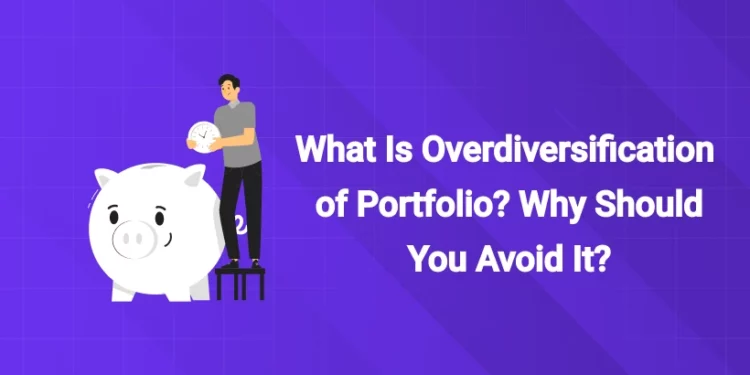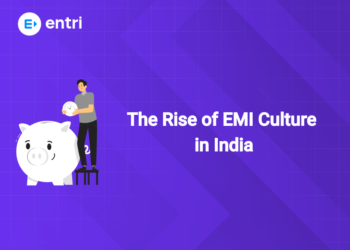Table of Contents
Introduction
In India’s dynamic investment landscape, more is not always better. While spreading risk matters, there’s a tipping point where diversification becomes counterproductive. This blog post unpacks the idea of overdiversification of portfolio, explains why it’s a hidden risk for Indian investors and shows how to build a portfolio that truly aligns with your goals.
Understanding the Concept of Overdiversification of Portfolio
1: What is a stock?
Diversification is a core investment concept: allocating money across different assets, sectors, geographies, and asset classes to reduce unsystematic risk. However, when you diversify excessively, that is, investing in too many holdings or overlapping funds that each one has a negligible impact, you face the risk of overdiversification of portfolio.
To keep it simple, you dilute your returns, complicate management, and may end up with a portfolio that behaves like a replica of the market index rather than one built for your aims. For Indian investors, this means that simply investing in a large number of mutual funds, stocks, or asset-classes does not automatically yield benefit, especially if many holdings overlap in sector, stock or strategy.
Learn Stock Marketing with a Share Trading Expert! Explore Here!
Why Does Overdiversification of Portfolio Happen in India?
1. Over‐enthusiasm and Fear of Missing Out
Many first-time or retail investors in India build portfolios by chasing ‘variety’, buying multiple mutual funds, stocks, gold, and international exposure, thinking more means safer. But that’s a key cause of overdiversification of portfolio.
2. Multiple Similar Funds
Investors often hold 5-10 equity mutual funds from different AMCs, but many of these funds invest in the same top stocks (e.g., the large-cap names in India). That creates overlap and little real diversification.
3. Too Many Asset Classes without Strategy
In trying to cover everything, equity, debt, mix, gold, real estate, international- investors may lose focus on their core goal, leading to a portfolio that is hard to manage.
4. Lack of Periodic Review
With a large number of holdings, tracking performance and rebalancing become challenging. Over time, drift and complexity lead to overdiversification of portfolio.
5. Indian Mutual Fund Market Particularities
In the Indian mutual fund context, large-cap funds often hold the same stocks; sector funds overlap; and adding more funds may simply duplicate underlying holdings rather than broaden exposure.
Why Should You Avoid Overdiversification of a Portfolio
Dilution of Potential Returns
When you own too many investments, each holding becomes too small to make a real difference if it performs well. The upside potential is averaged out across many average performers.
Hidden Overlap and Illusion of Diversification
You might feel diversified, but if many holdings correlate (e.g., the same large-cap stocks across funds), you are exposed to similar risks. Your portfolio then fails to deliver the benefit of true diversification.
Increased Complexity and Higher Costs
More holdings mean more difficulty in tracking, more fees (mutual fund expense ratios, transactional costs) and more time spent on analysing. For Indian investors this can be a drag on net returns.
Behavioural and Management Risks
With a large, unwieldy portfolio, rebalancing appropriately becomes harder. Drift in allocations may increase risk unintentionally. Also, decision-making may become less focused.
Portfolio Becomes “Index-like” and Loses Edge
When you own so many stocks or funds that your portfolio effectively mirrors the broader market index, you are paying for active management (if applicable) but getting index returns. That’s one symptom of overdiversification of portfolio.
How to Recognise When Your Portfolio Is Overdiversified
Here are practical signals Indian investors can look for:
- You hold more than, say, 10-15 equity mutual funds (plus debt, etc) and cannot clearly articulate how each fits.
- You see the same top 10 stocks repeated across multiple funds in your portfolio. Tools show high overlap.
- Your returns are mediocre and you feel your portfolio is “busy but flat”. For example, an article noted that one investor held 10 equity funds + 7 debt funds + others but still got average results.
- You spend a lot of time trying to keep track of many holdings and feel the portfolio is complex to manage.
- You don’t feel any individual holding has meaningful weight to move the needle.
- You cannot clearly define your asset allocation, risk budget, or goal-linking for each holding.
Stock Market Training Reviewed & Monitored by SEBI Registered RA
Trusted, concepts to help you grow with confidence. Enroll now and learn to start investing the right way.
Know moreSmart Strategies to Avoid Overdiversification of Portfolio
Clarify Your Investment Goals, Time Horizon & Risk Appetite
Before adding many holdings, ask: “What am I investing for? How long do I have? What risk can I tolerate?” A clear framework helps decide how many holdings make sense.
Adopt a Structured Asset‐Allocation Framework
In India, this means allocating across asset classes (equity, debt, gold, maybe international), and then within equity across styles (large-cap, mid-cap, flexi-cap) rather than buying many funds in the same category.
Limit Number of Funds / Holdings with Purpose
Rather than owning many funds, go for a smaller number of well-researched ones that cover distinct strategies. For example: one large-cap equity fund, one mid-cap, one debt, one gold, one international. References suggest that more than 3-4 equity funds may be unnecessary.
Check for Underlying Overlap
Use fund fact-sheets and overlap‐tools to see whether multiple funds hold the same stocks. If overlap is 40-50% or more, you might be overdiversified.
Regular Portfolio Review and Rebalancing
At least once in a year, review your holdings: Are they still aligned with your goals? Are allocations drifting? Are any small and under-performing holdings dragging you? If yes, simplify or exit.
Focus on Quality and Conviction
Better to hold fewer high conviction holdings/exposures than many “weak” ones simply for the sake of variety. In India, that might translate to carefully picking sectors or funds that add value rather than selecting many for “just in case”.
Make Costs Count
Every additional fund or stock adds costs (time, fees, taxes). If the marginal benefit of adding a holding is low, don’t add it. This mindset helps avoid overdiversification of portfolio.
Maintain Simplicity
A portfolio that you understand and can manage easily is better than one with many overlapping layers. For most Indian retail investors, a simpler, goal-linked and reviewed portfolio works well.
Key Takeaways
- Overdiversification of portfolio happens when the number or type of holdings grows beyond what adds incremental benefit and instead dilutes returns, increases cost and complexity.
- In the Indian investment context it often arises through holding many mutual funds or asset classes without checking overlap or strategic fit.
- The main risks of overdiversification of portfolio are dilution of returns, hidden overlapping risk, increased complexity, and losing alignment with investment goals.
- Recognise the warning signs: too many holdings, repeated stocks across funds, average returns, tracking difficulties.
- To avoid it: set clear goals; structure allocation; pick fewer, distinct funds/holdings; check overlap; review periodically; focus on conviction and simplicity.
- Simplicity, clarity and strategic focus often beat chasing “many” exposures. Let diversification be purposeful, not passive.
- Ultimately, you don’t diversify to diversify. You diversify to improve risk-adjusted outcomes. Excess doesn’t help. As one commentary noted: “Diversification is like ice-cream. It’s good, but only in moderation.”
Stock Market Training Reviewed & Monitored by SEBI Registered RA
Trusted, concepts to help you grow with confidence. Enroll now and learn to start investing the right way.
Know moreFrequently Asked Questions
What exactly is the difference between diversification and overdiversification of portfolio?
Diversification means spreading your investments across different asset classes, sectors or holdings to reduce risk. Overdiversification of portfolio happens when you spread too much, so many holdings that each contribution is negligible and returns get diluted.
How many mutual funds or stocks are “too many” in an Indian portfolio?
There is no one-size answer. But many experts suggest that for mutual funds, owning more than 3-4 equity funds (plus a couple of debt or alternatives) may lead to overlap and diminished returns.
Is overdiversification a risk even if I have a long investment horizon?
Yes. A long horizon helps absorb market cycles, but if your portfolio is diluted across hundreds of holdings, its ability to generate strong returns may be compromised.
Can overdiversification of portfolio reduce risk?
Up to a point, yes diversification reduces unsystematic risk. But beyond that point additional holdings add little risk reduction and may harm returns. Hence overdiversification can reduce return without meaningful risk benefit.
How can I check if my portfolio is overdiversified?
Review the number of holdings, check overlap of holdings/funds (especially common stocks across mutual funds), assess complexity and your ability to manage. If there are many funds holding the same top stocks, it’s a red flag.
What should I do if I realise I have over-diversified?
Simplify: identify redundant holdings, sell or reduce those that overlap; refocus on goal-based asset allocation; rebalance; reduce number of funds; invest with conviction.
Is there an “optimal” number of holdings for an Indian investor to avoid overdiversification?
Optimal depends on your size of portfolio, risk appetite, time horizon and goals. But practically, many Indian retail investors may do well with a handful of well-chosen funds/stocks rather than dozens. The quality and distinctiveness of exposures matter more than sheer number.
















